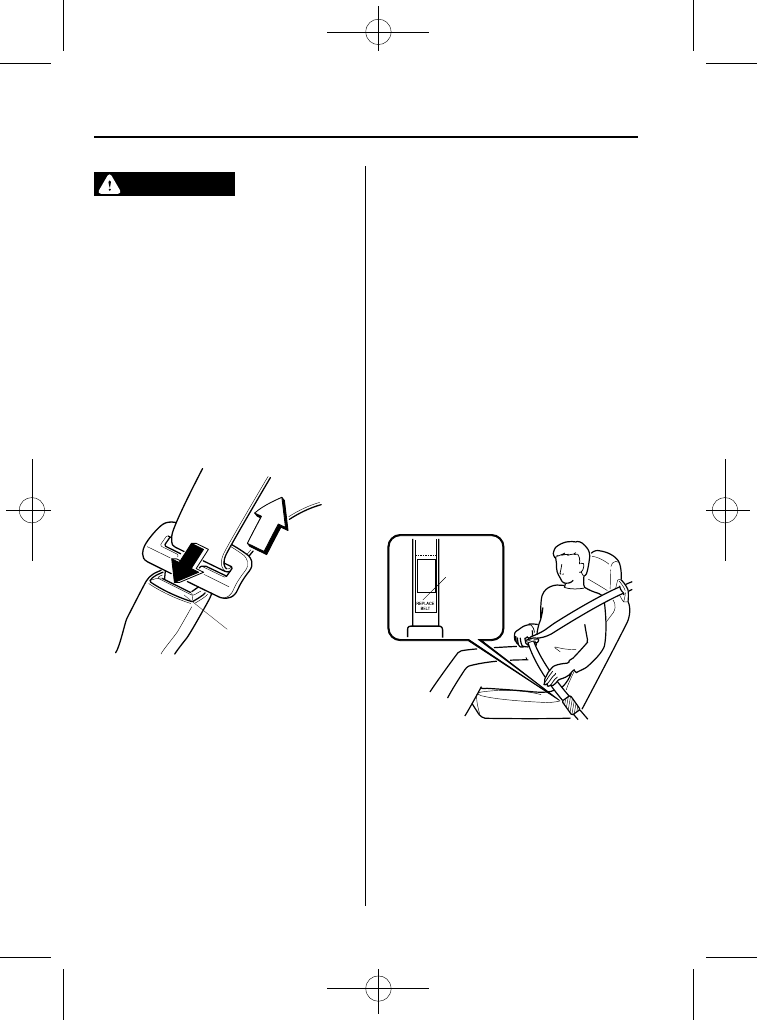Mazda MX-5 PRHT (2015 year). Instruction - part 2

Black plate (24,1)
WARNING
Positioning the Lap Portion of the Seat
Belt:
The lap portion of the seat belt worn
too high is dangerous. In a collision,
this would concentrate the impact
force directly on the abdominal area,
causing serious injury. Wear the lap
portion of the belt snugly and as low
as possible.
qUnfastening the Seat Belt
Depress the button on the seat belt buckle.
If the belt does not fully retract, pull it out
and check for kinks or twists. Then make
sure it remains untwisted as it retracts.
Button
NOTE
If a belt does not fully retract, inspect it for
kinks and twists. If it is still not retracting
properly, have it inspected at an Authorized
Mazda Dealer.
qSeat Belt Caution Label
A caution label has been placed inside the
sleeve of the lap portion of the driver's
seat belt. When an accident occurs while
the seat belt is in use, the resulting stress
on the seat belt will cause an indicator
with the words
“REPLACE BELT”
visible on it to be pulled out of the sleeve
below the caution label. This indicates
that THE SEAT BELT MUST BE
REPLACED.
Also note that if at any time the seat belt
has undergone stress because of an
accident or other reason, damage to the
seat belt's webbing, metal fittings, or
anchor bolt may have occurred, even
though nothing appears to be wrong with
the seat belt. For this reason we
recommend that the seat belt be replaced
after it has undergone stress, whether or
not the indicator has been pulled out.
Caution
label
2-12
Seat Belt Systems
MX-5_8EN7-EA-14E_Edition1 Page24
Friday, March 28 2014 3:38 PM